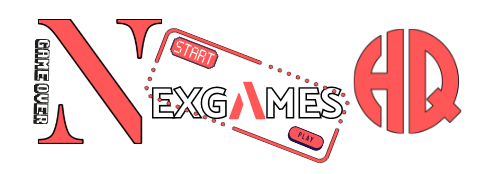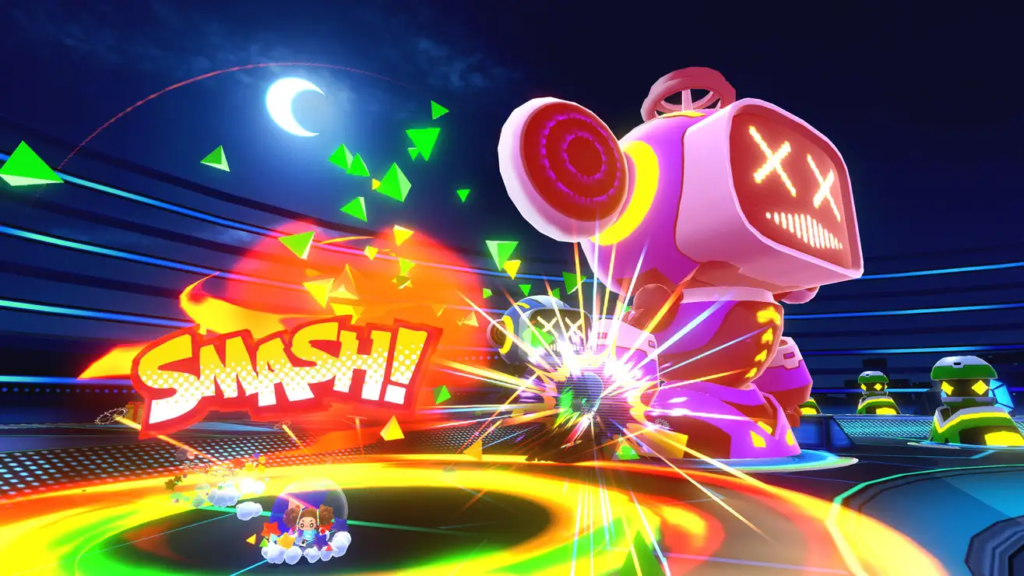
Sega’s franchise has returned to its former splendor following years of declining results.
If I may boast for a moment, I play the original 2001 Super Monkey Ball practically daily and I’m fairly decent at it. I play to pass the time in the evening, to relax during my lunch break, and occasionally to kickstart my brain in the morning. Usually, I select the Expert difficulty level, which consists of fifty stages, and try how far I can get without needing a continue. Here, there’s rarely a clear objective—I’m just kicking back in one of the greatest games ever created.
Super Monkey Ball is so fantastic that it seems wrong not to play it frequently. The game is really simple to pick up and play, feels flawless, and looks flawless. After only five seconds, you’ll comprehend every aspect of its design. A timer is counting down, you’re a person in a ball, and there’s a goal at the end of a floating obstacle course. To move, use the control stick. That is all. From the level architecture to the character motions to the HUD, every pixel onscreen is created with a refined, practical exactitude that keeps players’ attention fixed in the center of the frame while conveying a steady stream of intricate information.
I was relieved to find that it turned out to be the greatest Super Monkey Ball game in more than 20 years.
This is important since Super Monkey Ball requires complete focus and concentration. It’s a video game about molecules. Because the movement takes up almost all of the mechanical space in the game, even a small misstep of two millimeters with the control stick can completely alter (or damage) how you approach an obstacle. Nothing I’ve run in my twenty years with Super Monkey Ball has felt even close to this. Even after hundreds of runs through a stage, there are always fresh, surprising, and thrilling difficulties to overcome. In a different game, this would be fantastic. It’s amazing how well a game with just one verb can work.
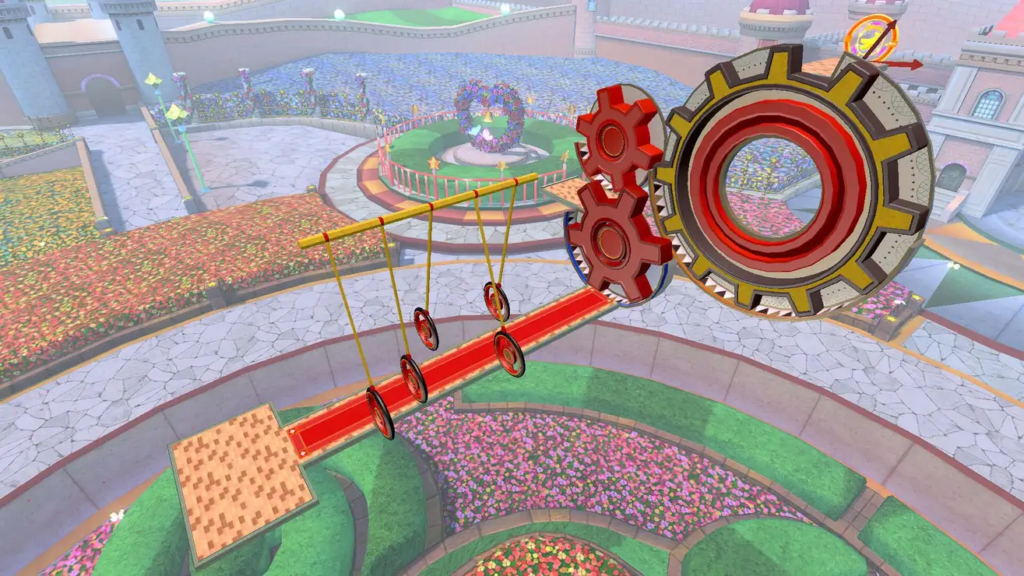
It’s also challenging to emulate. The wheels came off Super Monkey Ball 2, a terrific game that was occasionally hampered by its emphasis on mazes and puzzles over action-packed platforming, not long after it was released in 2002. With the exception of a few minor missteps (Super Monkey Ball: Banana Splitz, 2012, for example), the series has declined steadily throughout the course of its existence, with each new installment moving further away from the originality and rigor of the GameCube duology. After Super Monkey Ball: Banana Mania, a 2021 remake of the original two games that altered the games’ physics, destroyed its framework, eliminated multiplayer options, and caused a number of control and camera problems, I was about ready to give it up.
Suddenly, Banana Rumble, the first non-remake series installment since 2012, lands in our laps. I opened my review copy with cautious anticipation. I had suffered numerous burns in the past. Even just now. I was relieved to find that it turned out to be the greatest Super Monkey Ball game in more than 20 years.
The Animal Meat
Banana Rumble returns to the drawing board in nearly every significant aspect. There will be no more hopping, bloated minigames, or camera micromanagement. Motion controls are present, but they are hidden away in a confusing options box and are deactivated by default.
Anyone who was put off by Banana Mania’s limited customizability should find solace in the fact that there is even a confusing options menu. You can customize stick dead zones for both character and camera control, input display, automatic and manual camera speed, stage tilt severity, and stage tilt speed with Banana Rumble, so rest easy, seasoned ballers. (I tested the latter two, and they don’t seem to have anything to do with physics.) If you’re pining for a more conventional configuration, follow my lead and completely turn off the manual camera while maximizing automatic tracking. You’re playing Monkey Ball just like your mother used to, congratulations.
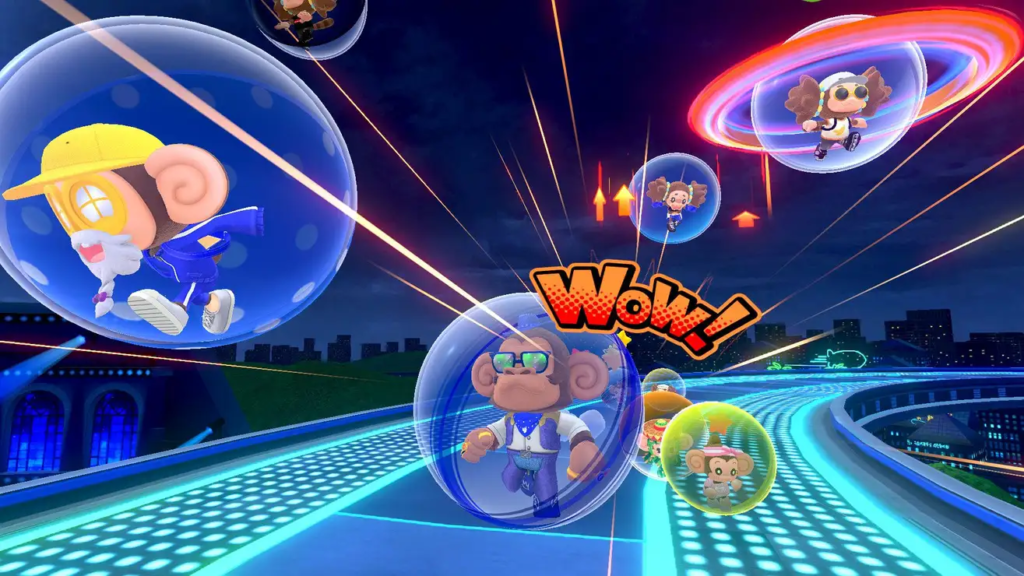
Even straight out of the box, this game is largely still mom’s Monkey Ball, despite some major formulaic changes that have been made, usually for the better and sometimes for the bad. Adventure Mode, the creamy nougat center, consists of 200 small platforming games, none longer than sixty seconds. These are divided evenly into twenty worlds, the first ten of which are the tale and the last ten of which are for “the real heads.” (As is customary with this series, the story is incredibly stupid and I wished it would disappear for the whole game. We’re back, baby!)
The quality of Super Monkey Ball’s level design determines its success or failure. At its best, every stage gradually increases in complexity while forcing you to grasp a new, intricate aspect of the game’s mechanics. At its worst, you get something like to Super Monkey Ball 3D, where each dish is a little, flat maze of a kids’ menu from Denny’s that doesn’t even attempt to educate you about itself. Thankfully, Banana Rumble most of the time belongs to the former group. Even in the few levels that are intended to be brainteasers first and raw execution checks second, there is a striking lack of consistency. The levels feel distinct and actually challenging for the first time in a long time. In fact, Banana Rumble is concerned with how you play; it wants you to meticulously examine each curve, edge, and space in its geometry.
This connection is drastically changed by one significant addition to the game’s movement: the spin dash, a blatant homage to Sonic the Hedgehog’s well-known move of the same name. Spin dashes in Sonic allow players to rapidly gain momentum from a complete stop, with the amount of time that a button is pushed in quick succession determining how quickly the character may snap forward. I was concerned before Banana Rumble was released since I thought its spin dash would work the same way. The different ways that Super Monkey Ball requires players to navigate slopes provide for a lot of tension; if not completely eliminate it, then at least significantly lessen it. This would be achieved by having the opportunity to instantly reverse course.

Fortunately, I was just two steps behind the kind people at Sega. In Banana Rumble, the spin dash serves as a momentum extender rather than a momentum producer. If you try to use it while halted, nothing will happen. You must be moving, and you may go much farther with the spin dash once you’ve gained some speed. A lovely tiny nesting doll made of dedication.
I’m still not convinced if this series requires any more controls beyond its basic one. Regardless of how it’s done, the purist in me wants to mock the spin dash since it seems so simple; why complicate something so pure? Perhaps, though, I’m going about this the incorrect way. Perhaps the question should be what Super Monkey Ball desires rather than what he needs. Just as we need food, water, and shelter, Super Monkey Ball also needs a ball, a level, and a timer. But momentum is what it seeks. It wants you to invest in that propulsion and carefully connect together several exact inputs to create a buttery, smooth motion. It is not the time to back down; accept it and watch what transpires. The spin dash is a wonderful fit for this philosophy. I would definitely want it to appear in every Super Monkey Ball game going forward if this were the first one.
Furthermore, Banana Rumble fulfills the promise of the spin dash. It is the focal point of many levels, both overtly and covertly created. The game exposed its hand when I started using the dash more freely and launching Simians through the air to see where they would land. If you know where to look, Banana Rumble has shortcuts packed into every corner. One of the most satisfying aspects of playing Super Monkey Ball has always been figuring out different methods to complete courses, and now we have a game designed just for that purpose. These short cuts can occasionally feel cheesy, but for every level that the spin dash trivializes, there are ten more that require careful, risk-taking applications of it.
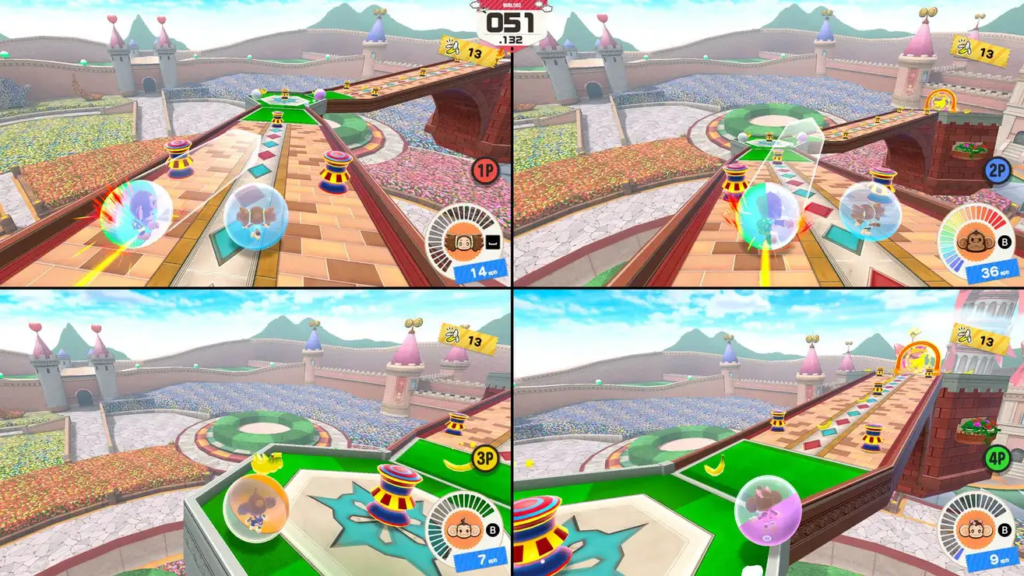
A variety of multiplayer games, just a few of which are reminiscent of previous series mainstays, complete Banana Rumble’s basic modes. The days of Monkey Target, Monkey Golf, Monkey Bowling, and Monkey Billiards are long gone. Along with a few other titles that all seem to be an attempt to attract the Fall Guys platformer-as-battle-royale audience, Monkey Race (now simply called “Race”) is back. Though I suppose they instantly beat Fall Guys by not making you feel like you’re swimming laps through a tar pit, none of them are very fascinating. Although I appreciate that these minigames maintain and refine the fundamental movement of Banana Rumble (including the spin dash) rather than implementing completely new control schemes (which was the norm in earlier Super Monkey Balls), they all seem a little repetitive by the end. For that very reason, race—the most basic—is also the best.

The true gem of this is the multiplayer Adventure Mode, which has been absent for decades but has triumphantly returned with online capabilities. This has always been one of the better examples of the adaptability of the series: put several people on the same course side by side, and their approaches would nearly instantly differ in a thousand minute details. Indeed, skill matters, but so does individual expression. It’s a conversation when there are enough participants.
The tubers
An arcade game called Super Monkey Ball originally existed. This is accurate both physically and literally (the game came out as a cabinet several months before it was published for the GameCube). Because of its progression systems, players must understand how each level functions both separately and collectively. To prevent a game over on harder difficulties, players must carefully plan their moves to maximize efficiency and banana accumulation (100 bananas give you an extra life, and the game has one of the best 1-up sound effects in the genre). Warp goals, for example, allow you to skip some levels, but doing so may deplete your banana counter, which you won’t appreciate when you’re facing a perilous road with only ten seconds remaining and no lives left. A comprehensive comprehension of the game is fostered by these conflicting tensions. To conquer it is to conquer everything.
Banana Rumble from 2024 isn’t an arcade game because those kinds of games aren’t produced anymore. Like all non-academic Super Monkey Ball games, it takes a lot of effort to justify and rework its design outside of the confines of an arcade. Since there are no lives, there are no game overs. Apart from time attack mode, which I adore, the stages are played individually rather than collectively, therefore there are no high scores. This prevents the stages from feeling like they are truly performing in unison. However, the game still has bananas and records your personal best times.
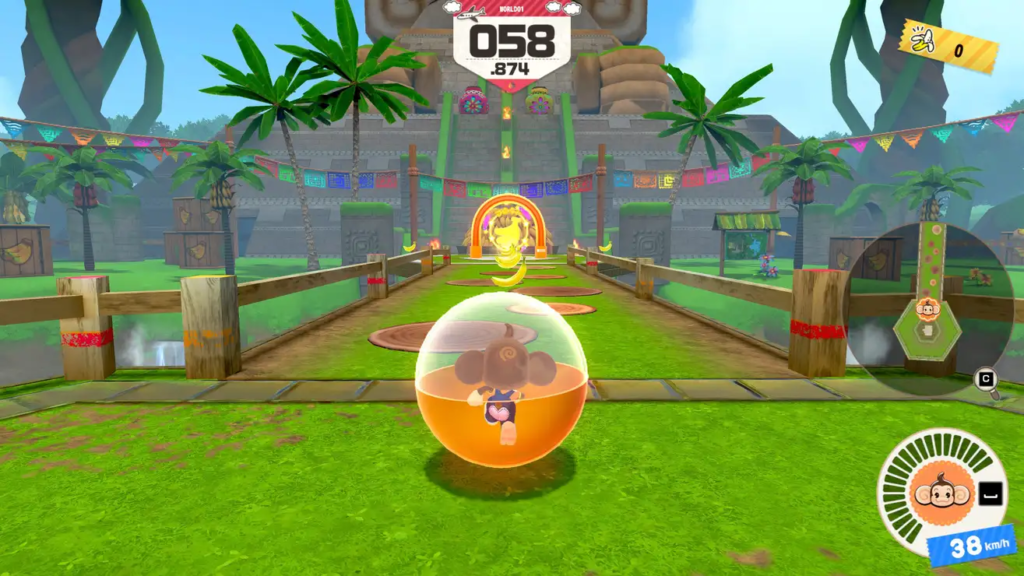
It takes two approaches to this problem, the first of which is really cunning. The game now includes three sub-challenges (referred to as “missions”) in each level: a par time, a par banana count, and one “golden banana” that is strategically placed in a challenging area. Whichever level you choose to take on will drastically alter how you approach it; it will nearly feel like beating old-school Super Monkey Ball challenges. The fact that the game has to force these challenges rather than allowing them to arise naturally is a little disappointing, but it also means that each level essentially contains three smaller ones, and I was constantly amazed and impressed by how much I had to change my strategy for each one.
A little more clumsy is the second solution. Banana Rumble uses a story and mission completion system in lieu of a standard scoring system to assign points. These points are mostly utilized as cash at the in-game cosmetics store, where you can buy additional frames for photo mode, play dress-up games with your characters, and just basically get fuck all. To put it plainly, this is pointless, and I can’t help but feel conflicted about the game’s ending here, as it nearly entirely deviates from the abilities and knowledge it demands you to acquire elsewhere. When Banana Rumble dangles the carrot, it turns out to be cotton candy instead of carrot; unnecessary calories are the last thing this skinny game needs.
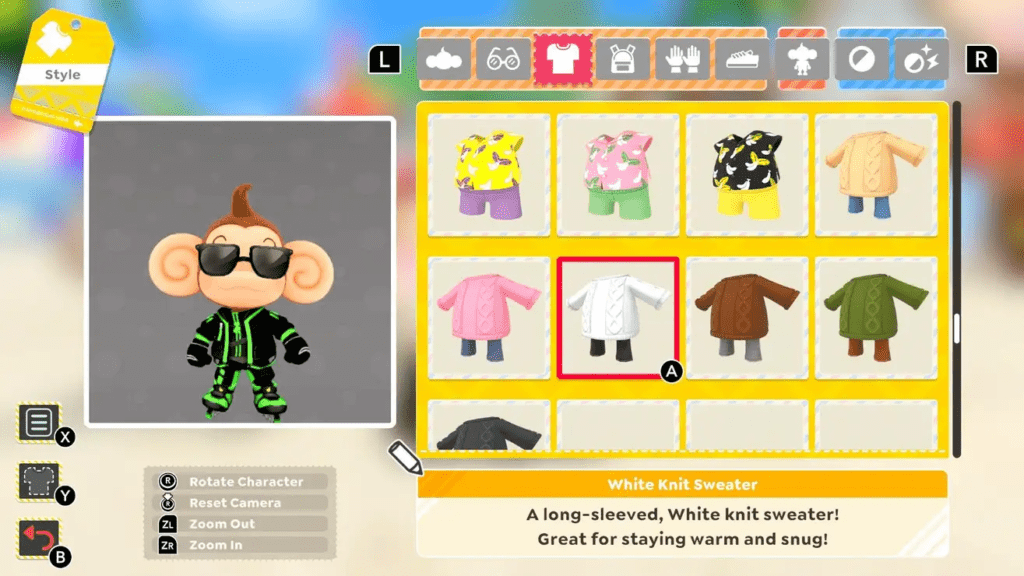
Now that we have determined Super Monkey Ball’s needs and wants, we can finally address the crucial question. What is it that I desire? I know deep down that what I really want is the original Super Monkey Ball. I’m looking for well-paced arcade variants, genuinely relevant scoring structures, and a simple, straightforward control method. I don’t want discrete levels, cosmetics stores next to game-as-a-service locations, or twelve different characters, each with their own stat distributions.
But what about the forest—these are just trees? What is it about Super Monkey Ball that draws me back to it year after year, day after day? It’s a fun video game, is the glaringly obvious response. Playing an enjoyable goddamn video game is what I actually want to do when I play Super Monkey Ball. And what more ideal option? The most basic and enjoyable video game is Super Monkey Ball. It allows you to accomplish only one thing, and that one thing is as enjoyable as anything in a video game can be.
I like Banana Rumble. I adore using it. Before something unexpected happened about 300 words into this review—I got The Itch—I believed I was pretty much done playing it. Even though I’d completed every level, I still wanted to do so. After my initial run, I had mainly written the missions off as pointless, but now I decided to give them a go. My goal was to break several records in time attack, particularly in the pre-release phase, when the limited competition would almost certainly secure a place in the top 5. (As of right now, June 23, 2024, 6:03 a.m., I have Dan Ryckert of Giant Bomb ahead of him in the globe 1 leaderboards by two seconds. Dan, if you’re reading this, it’s your turn.) The game functions as I had anticipated. It might not fulfill my every wish, but really, what does that matter? Perfect banana rumble is not necessary. It only has to be excellent. Furthermore, “perfect” and “good” are practically synonymous in Super Monkey Ball.
